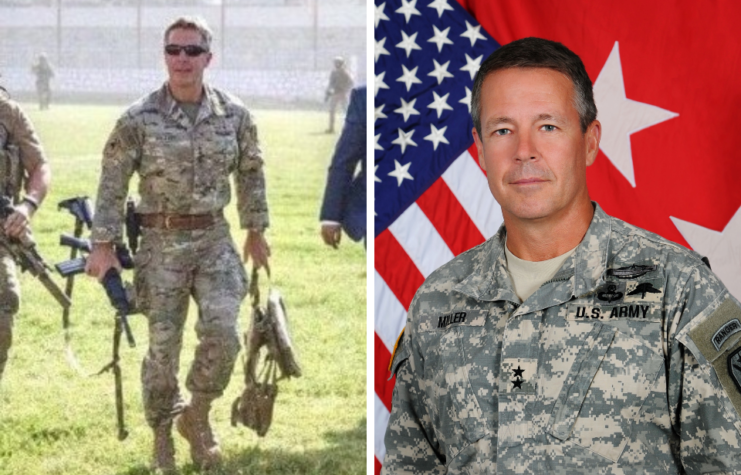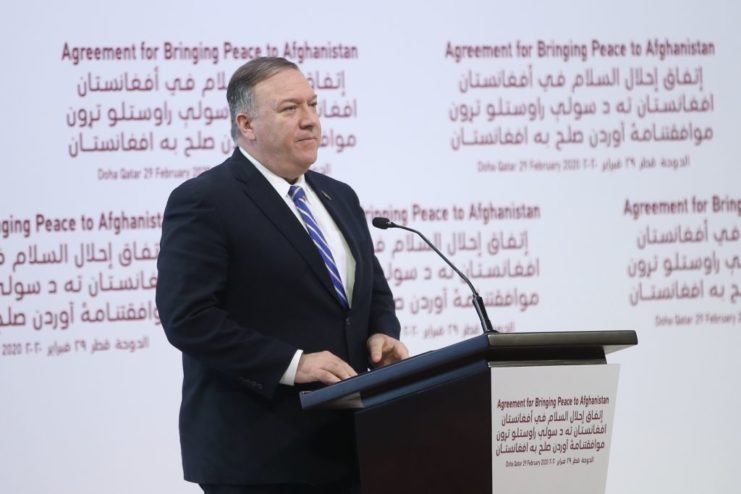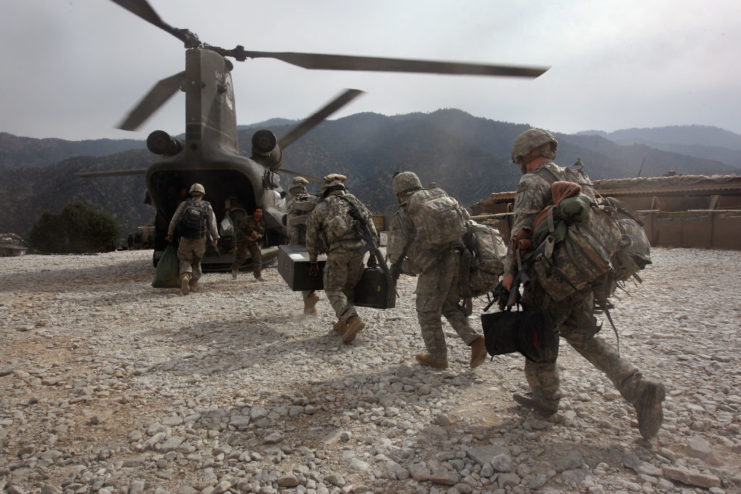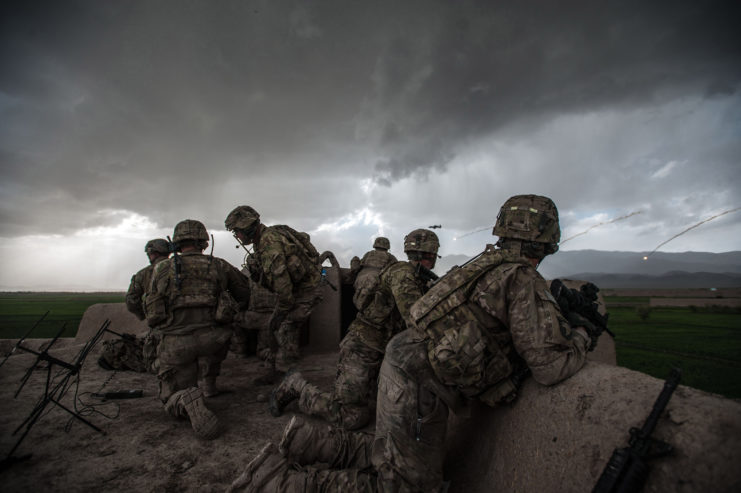General Austin Miller was born to lead

Gen. Austin Miller was born in Honolulu, Hawaii, on May 15, 1961. Upon graduating from the US Military Academy at West Point in 1983, he was commissioned as a second lieutenant. Following his completion of the US Army Ranger School, he was assigned to the 3rd Battalion, 325th Infantry (Airborne), 82nd Airborne Division.
In 1986, Miller became a platoon leader with A Company, 2nd Ranger Battalion, 75th Ranger Regiment. Upon completion of the Infantry Officer Advanced Course in 1989, he was assigned to 5th Battalion, 20th Infantry (Mechanized), 2nd Infantry Division, Eighth Army as a company commander and deployed to South Korea.
Selected to join the 1st Special Forces Operational Detachment Delta (Delta Force) in 1992, Miller showcased strong leadership skills, rising from squadron operations officer to unit commanding officer. During his tenure, he participated in various conflicts, including operations in Somalia, Bosnia, Afghanistan and Iraq.
By 2007, Miller had risen to the rank of colonel and held several prestigious positions, including director of the Interagency Task Force at US Special Operations Command, MacDill Air Force Base, Florida. Serving as the commanding general of the Combined Forces Special Operations Component Command in Afghanistan from 2013-14, he coordinated special operations forces.
From 2016-18, he commanded the Joint Special Operations Command.
Becoming US and NATO commander

In February 2020, the US and Taliban reached an agreement for the withdrawal of 13,000 American troops from Afghanistan by May 1, 2021. This was contingent upon the Taliban’s commitment to combating Al-Qaeda and other terrorist organizations. As a result of this guarantee, the US released 5,000 Taliban prisoners.
Despite ongoing Taliban attacks on Afghan government forces and their affiliation with Al-Qaeda, the withdrawal proceeded.
Gen. Austin Miller assumed command of the US Forces – Afghanistan and NATO‘s Resolute Support Mission in 2018, succeeding Gen. John W. Nicholson Jr. “The world recognizes we cannot fail,” Miller remarked upon assuming his new role.
Shortly after taking command, Miller was present at the governor’s southern Kandahar compound when a Taliban gunman shot provincial police chief Abdul Raziq. Brig. Gen. Jeffrey Smiley was also wounded in the incident. Miller was quick to respond and ensured medical attention for the wounded. He also personally accompanied them during the evacuation.
History of America’s longest war

The role of the US military in Afghanistan has undergone huge changes since the conflict’s onset in 2001. Shortly after the 9/11 attacks, on September 18, 2001, President George W. Bush signed a joint resolution permitting the use of force against those responsible. The War in Afghanistan officially commenced on October 7, 2001, with the military targeting Taliban forces as part of Operation Enduring Freedom.
As the conflict advanced, the Taliban retreated and seemed to disappear, while Osama bin Laden remained elusive. By 2003, most of the intense fighting had diminished, and American officials began working with the new Afghan government to rebuild the nation.
For a time, interactions between US soldiers and Afghan civilians were relatively peaceful, but Taliban attacks reignited in 2006, marked by a series of bombings. In 2009, under President Barack Obama’s administration, the US renewed its efforts to reduce the Taliban’s influence as violence persisted, often hurting civilians caught in the crossfire.
A significant milestone was reached when Osama bin Laden was killed by US Special Forces in 2011. As the 10th anniversary of the war neared, Obama pledged to withdraw all troops by 2014.
General Austin Miller held the line

The first decade of the war was incredibly costly. Some 1,800 US troops died and $444 billion was spent on the war effort. By 2018, President Donald Trump outlined a new policy that would ultimately lead to an escalation between Taliban and American forces.
When the Trump Administration excluded Kabul from peace talks with the Taliban in late 2018, General Austin Miller was put in a difficult position, which Jason Campbell, a policy researcher at Rand Corporation, said put the commander “in react mode very early on in his time in command.” He added, “Everyone was operating under some level of uncertainty as to what the White House was going to decide or state publicly next.”
After on-and-off peace talks between the US and Taliban, Trump announced the withdrawal of American troops from Afghanistan in 2020. Behind the scenes, Miller was working to convince the president not to pull out all troops, urging him to be “more patient and careful.” Miller was known for being an expert negotiator, bringing a “calm diplomatic demeanor” to the table while still remaining a strong presence in front of Taliban officials.
“He consistently pressed the Taliban to reduce violence and made clear to them that the US would continue to defend Afghan security forces if necessary,” an unnamed US official said. The official added that Miller “called it like it was when it came to levels of violence, going toe-to-toe with the Taliban in a way that we weren’t seeing from other US diplomatic officials.”
Under Miller’s command, the goings on behind US military doors became increasingly harder to discern. Journalists had more restricted access to NATO troops, officers and locations due to Miller’s heavy restrictions. Unlike his predecessor, he didn’t use the official NATO commander Twitter account, and also stopped publishing monthly statistics on airstrikes in Afghanistan.
General Austin Miller oversaw the complicated withdrawal

The withdrawal presented considerable difficulties. Kabul fell swiftly to the Taliban, leading to the collapse of the Afghan government. During the withdrawal, an attack at a checkpoint near Kabul International Airport resulted in the tragic loss of 13 Marines, amidst the ongoing evacuation of thousands. Furthermore, 170 Afghans perished in the attack perpetrated by the Islamic State – Khorasan Province.
Numerous Afghan citizens, fearing the prospect of living under Taliban governance, endeavored to depart the country on the very flights facilitating the return of personnel as part of the withdrawal effort.
More from us: Downing of Extortion 17: The Single Deadliest Incident of the US War in Afghanistan
On July 12, 2021, General Austin Miller ceremoniously folded the flag representing the Operation Resolute Support Mission, symbolically concluding his tenure of two-and-a-half years as commander. Just over a month later, the 20-year conflict in Afghanistan reached its end with the full withdrawal of American personnel. In a brief farewell gathering, Miller promised, “The people of Afghanistan will be in my heart, and on my mind, for the rest of my life.”
